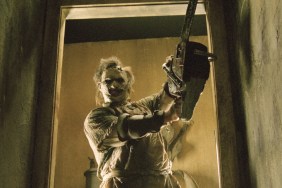Sorority House Massacre: A deeper look at the undervalued downmarket 1986 slasher film
There is some strange common notion spread around general film criticism and movie fandom as well as being deeply rooted inside the “horror community,” that the teens (or at least the twenty-somethings playing teens) and the young adults (usually prescribed as “caretakers” to youngsters at many-a summer camp) that populate the slasher film subgenre are “throwaway,” and not constructed in the mindset for an audience (general or strictly devoted to horror) to be cared for. I am here to debunk this kind of thinking. Sure, the oft-talked about and written about “Final Girl” is most definitely a cinematic archetype that is absolutely conceived in the light of being a character to identify with, root for and champion — and she is also usually beautifully thought out and multi-faceted to ground these kind of opinions — however, the victims in slasher movies also deserve our sympathetic common-eye and collective-heart, as they are not only there to get served some spectacular, operatic, grandiose and visceral offing, but they are also there to serve story and have a presence that helps generate an empathetic leaning towards the leading lady.
On-screen violence in slasher films is something to cherish and celebrate — the gorier the merrier — it provides a fundamental release that is both primitive and necessary and when choreographed, staged and set-up creatively and in an inspired manner, it can become iconic and memorable for years to come; talked about endlessly by legions of fans. It also does something for the performer who has that opportunity to be slaughtered in a slasher film; it allows them to become a filmic reference point to the history of one of the most important and bankable subgenres ever to come out of cinema – and a lot of these young artists gave their doomed teens a lot of pathos, that they may not have gotten from the script or the director. Movie franchises such as the A Nightmare on Elm Street films tapped into this kind of thinking, and throughout the series, writers, producers and directors developed dynamic and complicated characters for resident dream-demon Freddy Krueger to slice his way through, but I am not here to rally for those NoDoz addicted suburbanites, instead I am here to discuss a film that really is a prime example of sympathetic victims of circumstance.

Sorority House Massacre (1986) does bear a massive semblance to the much better The Slumber Party Massacre (1982), but it stands on its own two feet with sturdy stoic pride. Writer/director Carol Frank lays her foundation in one of the most primary of slasher film folklore – that is, she establishes off-screen past trauma that will plague her heroine throughout the duration of the film, and then re-introduces the unstoppable penetrable force (the killer) who will systematically attack the aforementioned heroine until she fights back, confronts him and ultimately destroys him. Of course, along the way, the heroine’s friends are killed, one by one, and that is the core reason as to why these characters should be championed as people to care about – they are purely victims of circumstance. Much like Annie (Nancy Loomis) and Lynda (P.J. Soles) in Halloween (1978) are obstacles for Michael Myers to get to his sister Laurie (Jamie Lee Curtis), the six teens who are killed in Sorority House Massacre are made casualties through association – their connection to the protagonist who is the object of “desire” for the killer, puts them in mortal jeopardy. Therefore, their suffering and deaths should give them an opening of audience consideration. And unlike Annie and Lynda, the girls (and some of the boys) in Carol Frank’s film are supportive and genuinely kind to the “Final Girl,” without berating her about virginity and so forth as seen in John Carpenter/Debra Hill’s master work.
The film opens with “Final Girl” Beth (Angela O’Neill) in hospital recuperating after a lengthy ordeal (which will soon unfold as the primary narrative construct) where she talks about her experiences at a sorority house that she soon realizes was her childhood home once upon a time. The issue there is that the house from her girlhood, was a house of horrors where her psychotic brother Bobby (John C. Russell) had killed her entire family, leaving her the sole survivor. After her aunt passes away (an aunt that did all the off-screen “raising”), Beth is sent to a boarding school where she meets a group of likeable girls who bond instantly, look out for one another, enjoy each other’s company, share secrets and devote their time to mutual understanding and soulful friendship. Of course, in classic slasher movie fare, the killer — in this case, Bobby, Beth’s brother — returns, escaping from a mental asylum and stalks his troubled sister.
Of all her friends, Linda (Wendy Martel) is the most compassionate and nurturing of the lot; and Beth trusts her enough to hypnotize her, unlocking some hidden torment, which validates her paranoia and anxiety. Beth’s distress is represented by methodically-placed flashback sequences that we, the audience, become accustomed to early on. Although these flashbacks are somewhat disjointed to begin with and rather distracting in the opening few scenes of the film, they do become necessary and cleverly captivating, to the point where if they don’t pop up, you tend to miss them and need them to fill in some rudimentary blank points. These flashbacks all sing out the trauma Beth suffers, and her memories of Bobby, her murderous brother whilst also bridging together the loyalties shared by Beth and her understanding friends. By the closing moments of the film, Beth finally opens up about her past ordeal to Linda, who listens with an open heart, comforts Beth with a dignified grace and most importantly poo-poos the idea that Beth has brought this on herself, and that it is all her fault that her friends are dying around her. The tragedy here is that Linda eventually protects Beth, slamming a shovel into Bobby’s head and knocking him out cold, but then is stabbed to death minutes later, leaving Beth the sole survivor once again. In childhood Beth remains alive and tormented, and in her teenage years, Beth lives but is forever changed. Linda is a clear example of a character that deserves an audience’s appreciation and admiration, she is forthright, warm, honest, caring and above all human – something that the other characters in the film that surround Beth all share.

As well as the girls being sympathetic victims of Bobby’s maniacal rage, one of the boys of the group Craig (Joe Nassi) comes to represent a kind of fatherly protector when his girlfriend is killed and he is left in the company of the sole-surviving ladies. As well as being confident and reassuring, Craig is athletic, good looking and “together,” which is a complete counter to the demented and disturbed Bobby – a trait often found in slasher films where the boy “with the most to do” is presented in an attractive light, while the killer is almost always masked or disguised by shadow or manipulative camera angles. Craig spends most of his scenes “physically vulnerable” (and for males, that reads as shirtless) and his care for the three remaining girls is focused and pure. He also doesn’t dominate the scene either, instead he offers suggestions of survival, but is constantly upped one by the far more resourceful Linda. When a fire safety ladder is used to help assist an escape from the building, Craig volunteers to climb down first and hold it steady for the girls to climb down – opening him up to danger and complimenting his chivalry as someone who will risk everything in order to protect his late girlfriend’s buddies. Once again, much like Linda, Craig is a sacrificial lamb put to slaughter who will be killed in the wake of “rescuing” or “trying to help” Beth. The argument thus stands – here is yet another victim in a slasher film that truly deserves a “pat on the back” rather than a simple dismissal which renders him “slasher movie fodder.”
What a film like Sorority House Massacre does with its teen victims, is present them as affable and compassionate young people, destined for good things, but severed along the way. In many regards, Beth seems to be the character with the least ambition and with a stunted vision for her future; she is completely consumed by her past and her horrifying childhood — and yes, that is logical and completely warranted — however, it is her friends that move forward with a kinetic energy, ready to take on experience and worldliness, and the fact that their lives are cut short is more tragic than anything else. Death is presented in sharp-cutting bluntness in Carol Frank’s movie, and Bobby is a killer that acts out with a reflexive sense of urgency in his slayings – so much like many slasher offerings, the film kills its victims in a choppy fast manner without any time whatsoever to mourn such loss. However, in saying this, Frank is a smart filmmaker who builds upon the mapped-out murders by marrying them with a rich character design for each of Beth’s friends who cop it, and that is why the film succeeds in being a “dead teenager movie” with teenagers to care about and value.









